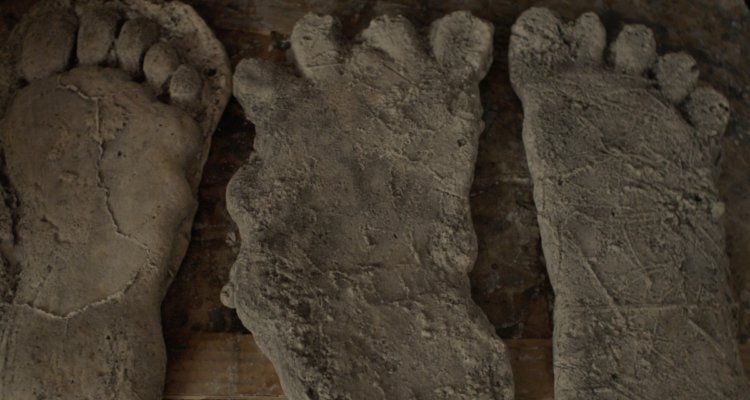Despite its playfully elusive subject, and a title that is somewhat of a misnomer, Joshua Rofe’s newest docuseries, Hulu’s “Sasquatch,” produced by the Duplass Brothers, uses the titular monster mainly as an inroad to explore the monstrosity of race relations in California’s so-called Emerald Triangle. Misleading, and somewhat scattered in how it brings a number of disparate narrative threads together, Rofe’s series is nevertheless an unsettling and compelling dive into both the sub-culture of “Squatch Hunters,” as well as the intersection of illegal pot growers and the migrant labor that they employ. If those two subjects sound radically unrelated, that is somewhat the point, as Rofe teases out the relationship between socially defined monstrosity and those who reject conventional lifestyles. As it becomes increasingly obvious across the three episodes – each running under an hour – “Sasquatch” is much more about the reasons we create fictional monsters to explain away our own horrible acts than those who try to hunt the fictional creation.
Following the Gonzo journalist David Holthouse, a producer on the film, as he initially recounts his time working on a pot farm in Mendocino County, CA in 1993. Having already lived a life infiltrating, and subsequently writing about, Meth dealers and Neo-Nazis, Holthouse is particularly attuned to the way that underground cultures operate. While hanging on a farm, he overhears a story about three cannabis farm workers who were brutally murdered, torn limb for limb, possibly by a mythical beast. Despite initially thinking little of the story, he returns to the Emerald Triangle – Humboldt, Trinity, and Mendocino Counties in Northern California – to investigate if there was any truth to the story. What begins as an entertaining, if derivative, look at the odd group of Sasquatch Hunters that populate the county in the first episode, soon transitions into a much darker exploration of the murders in the second and third.
By diving into the history of the region, which lays claim not only to Sasquatch sightings – including the infamous 1967 Patterson-Gimlin film purporting to show Bigfoot – but also a complex and closed-off economy of marijuana growers. Rofe wisely interlaces Holthouse’s present investigation with contextual background, showing the ways in which back-to-landers in the 1970s created a haven for pot cultivation in the region, only to have small government operations – including the ironically named CAMP (Campaign Against Marijuana Planting) – destroy their work in the 1980s. As this black market grew, the types of people who took on the cultivation transformed from the docile hippies of the ‘70s to more nefarious figures in the ‘90s into today. Further tied to this underground market was the inherent racial component, which saw numerous workers migrate to the Triangle in hopes of finding lucrative, but nevertheless illegal, positions on these makeshift farms.
As Holthouse continues to move through this subculture, meeting various contacts, informants, and investigators, the film treats his investigation as an entry point into the larger issues that plague the region. Like his use of Sasquatch, Rolfe’s series may start with a murder, but that is only really a smaller component in the larger story. Holthouse’s dogged determination to solve a murder that may not even exist is fascinating in the ways that he both gains and attempts to corroborate information. As Holthouse is introduced to the various players in the drug trade, Rolfe makes a few interesting formal decisions. Intermixing animation, reenactments, and pixelated figures, one is never sure what is really being documented and what is being staged by the filmmakers, a compelling, if still controversial, choice. For a series that often dwells on the intersection between myth and fact, Rofe makes sure the viewer is consistently questioning the authenticity of any given scene.
Even though “Sasquatch” runs about the length of a feature film, the series aspect surprisingly works, as each chapter continually zooms out from the inciting murders to explore how the region protects its own and what happens when an interloper, like Holthouse, attempts to gain access. But, as the series expands in scope, it also becomes a bit tangled, trying to explain the history of Bigfoot, pot farming, and migrant workers, all in the span of three relatively short episodes. In doing so, “Sasquatch” takes on a little too much, overflowing with information, history, supernaturalism, and investigation. While the series often deftly moves between those genres, by the final episode, Rofe and Holthouse don’t necessarily bring everything together in a completely satisfying way. While we get explanations, or more accurately, tentative answers, about the murders, and the connection to Squatch, this is one of the few series that might’ve benefitted from an increase in episodes, further diving into the historical antagonism between the pot farmers and the conservative fight against them. Despite these small qualms, “Sasquatch” is a particularly compelling, binge-able, show that hides a complexity under its simple title. [B+]
“Sasquatch” is available now on Hulu.

